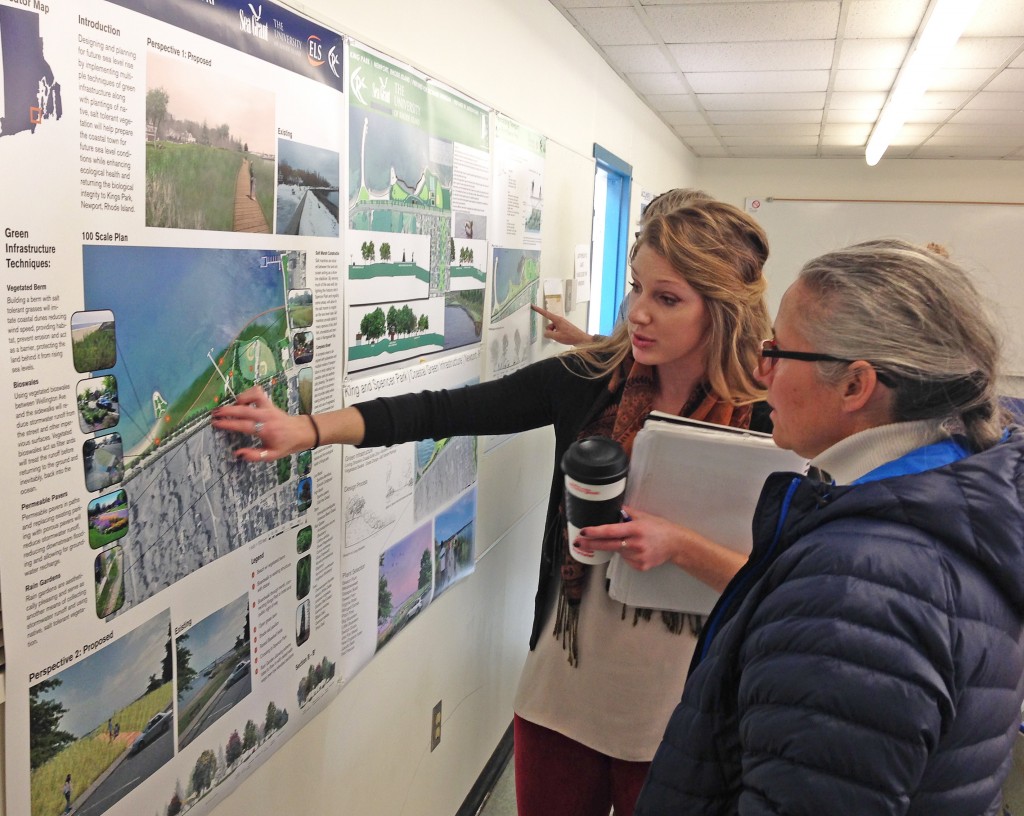
The Rhode Island GRIP engaged a learn-by-doing approach to identify opportunities and obstacles to using green infrastructure as a tool for coastal resilience in Newport, North Kingstown, and Warwick. Green infrastructure mimics natural processes to solve problems – environmental and otherwise – while providing multiple community benefits.
Rhode Island has several examples of coastal GI providing cost-effective approaches to manage stormwater as well as reducing shoreline risks of flooding and erosion.
Activities undertaken by the RI GRIP team included:
- Partnering with municipal teams and practitioners to develop conceptual plans featuring green infrastructure techniques appropriate for coastal areas,
- Compiling lessons learned in a booklet that introduce municipal decision makers, staff, and planning boards to green infrastructure and its coastal application.
- Working with municipal maintenance staff to identify best practices for designing with maintenance in mind,
- Partnering with URI Landscape Architecture student studios to inform their coastal resiliency designs,
- Developing guidance on stakeholder engagement via a charrette lesson plan and hands-on experience.
Funding was provided by the Department of the Interior through a grant from the National Fish and Wildlife Foundation’s Hurricane Sandy Coastal Resiliency Competitive Grant Program.
The partnership, facilitated by the URI – CRC and Rhode Island Sea Grant, included the City of Newport, Town of North Kingstown, City of Warwick; the Coastal Resources Management Council, the Department of Environmental Management, the RI Nursery and Landscape Association, the Narragansett Bay Research Reserve, Save The Bay, URI’s Landscape Architecture Program and Cooperative Extension Program, and the University of New Hampshire Stormwater Center.


